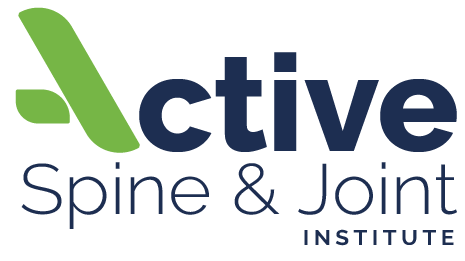The Science Behind Regenerative Medicine: A New Hope for Chronic Joint Pain
Chronic joint pain can feel like an endless battle, affecting your mobility, independence, and quality of life. Whether caused by arthritis, sports injuries, or wear and tear over time, joint pain is a common issue that has traditionally been managed with medications, injections, and even joint replacement surgery.
However, these approaches often provide only temporary relief or come with significant risks and recovery times.
Thankfully, advances in regenerative medicine offer a promising alternative—one that focuses on healing the body rather than just masking pain.
Regenerative medicine harnesses the body's natural ability to repair and regenerate damaged tissues, providing relief for joint pain without relying on drugs, painkillers, or invasive surgeries. In this article, we’ll explore the science behind regenerative medicine, how it works, and why it is becoming a game-changer for arthritis treatment and joint health.
Understanding Joint Pain and Traditional Treatments
The Root Causes of Joint Pain
Joint pain can result from a variety of conditions, including:
Osteoarthritis – The most common form of arthritis, where cartilage breaks down over time, leading to bone-on-bone contact and inflammation.
Sports Injuries – Ligament tears, meniscus damage, or overuse injuries can lead to chronic joint pain and long-term damage.
Degenerative Conditions – Aging and genetic predisposition can contribute to joint deterioration.
Traditional Approaches to Joint Pain
Conventional treatments for joint pain typically include:
Pain Medications – NSAIDs and opioids can temporarily relieve pain but often come with side effects and the risk of dependency.
Cortisone Injections – While they can reduce inflammation, repeated injections may weaken cartilage over time.
Physical Therapy – Strengthening the muscles around a joint can help manage pain but may not address underlying damage.
Joint Replacement Surgery – A last-resort option that involves removing the damaged joint and replacing it with an artificial one. Recovery can be lengthy, and outcomes vary.
While these treatments can provide relief, they often fail to promote actual healing. This is where regenerative medicine comes in.
What Is Regenerative Medicine?
Regenerative medicine is a cutting-edge field that utilizes biological treatments to repair damaged tissues, reduce inflammation, and restore function. Instead of simply managing symptoms, regenerative therapies aim to stimulate the body’s healing mechanisms to rebuild and strengthen joints naturally.
Key Regenerative Treatments for Joint Pain
Stem Cell Therapy
Stem cells are the body’s raw materials, capable of developing into different types of cells. In joint repair, stem cells help regenerate cartilage, reduce inflammation, and promote tissue healing.
Mesenchymal stem cells (MSCs), often derived from Wharton's Jelly, bone marrow, or fat tissue, have shown promise in improving joint function and reducing pain.
Platelet-Rich Plasma (PRP) Therapy
PRP is derived from the patient’s own blood and contains growth factors that accelerate tissue repair.
By injecting PRP into an injured joint, it can enhance healing, reduce inflammation, and improve mobility.
Electric Cell Signaling Therapy (ECST)
A non-invasive treatment method that uses low-level electrical currents applied to the skin through electrodes to stimulate nerves and promote healing.
ECST is often used to address conditions like chronic pain or peripheral neuropathy by signaling cells to repair themselves through electrical impulses.
It is considered a safe and drug-free treatment option with minimal side effects.
Cold Laser Therapy
Uses low-level light to stimulate cell repair, reduce inflammation, and relieve pain in damaged joints.
Often used alongside other regenerative treatments to enhance healing.
Alpha-2-Macroglobulin (A2M) Therapy
A2M is a naturally occurring protein found in blood plasma that acts as a powerful inhibitor of cartilage breakdown.
Research has shown that A2M can help block the enzymes that degrade cartilage, potentially slowing the progression of osteoarthritis and joint degeneration (source).
How Regenerative Medicine Provides Relief for Joint Pain
Regenerative treatments work by activating the body's natural repair processes. Here’s how they help:
Cartilage Regeneration – Unlike medications that only relieve pain, regenerative therapies promote the regeneration of cartilage, which cushions joints and prevents further deterioration.
Reduced Inflammation – Many regenerative treatments reduce the inflammation that contributes to chronic pain and stiffness.
Tissue Repair and Strengthening – By stimulating cellular repair, regenerative medicine helps strengthen the joint and improve function.
Long-Term Relief – Instead of temporary pain relief, regenerative medicine focuses on long-term healing, reducing the likelihood of needing joint replacement surgery.
Why Regenerative Medicine Is the Future of Arthritis Treatment
Non-Surgical and Drug-Free Alternative
For those seeking relief for joint pain without surgery or reliance on painkillers, regenerative medicine offers a compelling alternative. Unlike joint replacement surgery, which involves significant downtime, regenerative treatments are minimally invasive and require little to no recovery time.
Scientifically Backed and Continually Advancing
Numerous studies support the effectiveness of regenerative therapies for conditions like osteoarthritis and sports-related injuries. As research continues, regenerative medicine is becoming a more accessible and reliable option for patients looking for lasting relief.
Personalized Treatment Plans
Regenerative medicine isn’t a one-size-fits-all solution. Treatment plans are tailored to the individual’s condition, ensuring that each patient receives the most effective therapy for their unique needs.
Is Regenerative Medicine Right for You?
If you’ve been told that joint replacement surgery is your only option, or if you’re tired of relying on medications that only mask the pain, it may be time to explore regenerative medicine. Ideal candidates include those who:
Suffer from chronic joint pain due to osteoarthritis, sports injuries, or past injuries.
Want to avoid the risks and downtime associated with surgery.
Are looking for a natural approach to healing and pain relief.
Take the Next Step Toward Pain-Free Living
At Active Spine and Joint Institute, we specialize in cutting-edge regenerative treatments designed to help you regain mobility and live without joint pain. Our comprehensive, non-surgical approach has helped countless patients avoid joint replacement surgery and experience real, lasting relief.
Call today to get pain-free and find out if regenerative medicine is right for you!

